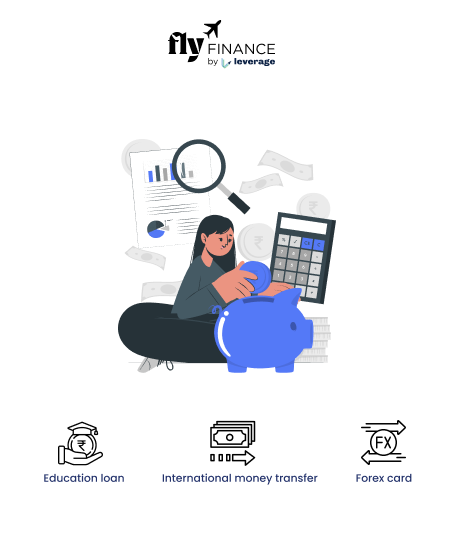Investing money wisely is key to building wealth over time. One of the easiest and most popular ways to invest is through a SIP- Systematic Investment Plan. But what exactly is SIP, and how does it work?
In this blog, we’ll explain SIPS, their benefits and disadvantages, the best banks and platforms for SIPS, how to decide how much to invest, which SIPs give high returns, and much more.
Let’s dive in! Get ready to understand how small, regular investments can turn into big financial gains- all with the power of consistency and compounding!
This Blog Includes:
What is SIP in Banking?
The full form of SIP in banking is Systematic Investment Plan. It’s a smart way to invest in mutual funds by contributing a fixed amount regularly (monthly, quarterly, etc.).
A mutual fund is simply a pool of money from many people, which is then invested in things like stocks, bonds, or other assets by expert fund managers.
Instead of waiting to collect a big sum of money and then investing it all at once, SIP helps you invest bit by bit, just like a recurring deposit (RD).
But here’s the difference: in an RD, you earn a fixed interest. In a SIP, your money has the potential to grow faster depending on how the market performs.
Here’ why students or anyone who wants to build a secure financial future without getting overwhelmed, should start an SIP-
- Start Small – You don’t need a lot of money to begin.
- Disciplined Saving – It builds a habit of regular investing.
- Less Risky – Since you invest in parts over time, you don’t invest everything when the market is high.
- Power of Compounding – Your returns get reinvested, which helps your money grow more over time.
How Does SIP Work?
If you’re new to investing and wondering how to start growing your money, a Systematic Investment Plan (SIP) could be your perfect starting point.
It’s a simple and low-risk way to invest regularly in mutual funds, without needing to time the market or have a lot of money upfront.
But how exactly does SIP work? Let’s break it down in the easiest way possible:
1. You Choose the Amount and Frequency
You decide how much you want to invest- say INR 500, INR 1000, or more, and how often (usually monthly). This amount stays fixed and is automatically deducted from your bank account via ECS (Electronic Clearance System) or other auto-debit mode on a date fixed by you.
2. Automatic Investment Happens
Once the amount is debited, it is invested into the mutual fund you’ve selected. This is done automatically, so you don’t need to manually invest every month.
But how do you choose the right mutual fund?
If you’re new to investing, picking the right mutual fund might feel confusing. Here’s how you can make it simple:
- Use trusted investment platforms like Groww, Zerodha Coin, Paytm Money, Kuvera, or directly through bank apps.
- Look for mutual funds with a good long-term track record (5+ years of performance).
- Choose based on your goal:
- Want higher returns and can take some risk? Look at Equity Mutual Funds.
- Want safer returns with low risk? Go for Debt or Hybrid Funds.
- Check the fund rating on websites like Moneycontrol, Value Research, or Morningstar.
Once you’ve selected a fund, you can start a SIP with just INR 500 per month! The platform will automatically invest the money for you every month, you just need to set it once.
3. Mutual Fund Units are Bought
Your money is used to buy units of the mutual fund based on the current market price (called NAV – Net Asset Value).
- If the market is high, you get fewer units.
- If the market is low, you get more units.
This strategy is called Rupee Cost Averaging, and it helps reduce the overall risk of market ups and downs.
4. Your Investment Grows Over Time
As time passes, your mutual fund investment earns returns. These returns get reinvested, and your money starts growing faster, thanks to something called the Power of Compounding.
Simple Example of SIP Growth
Let’s say you invest INR 5,000 per month through SIP for 10 years, and you earn an average return of 12% per year.
- Total money invested: INR 6,00,000
- Approximate value after 10 years: INR 11.5 lakhs
That’s almost double the amount you invested- just by staying consistent!
Benefits of SIPs (Systematic Investment Plan)
SIP (Systematic Investment Plan) is one of the most popular ways to start investing, especially for beginners. It offers a stress-free and affordable way to build wealth slowly and steadily, without needing to time the market or invest a big lump sum.
Here are some key benefits of SIP:
1. Affordable
You don’t need a large amount to start. You can begin your SIP with as little as INR 500 per month, making it perfect for students, first-time investors, and young professionals.
2. Disciplined Investing
SIP creates a habit of regular saving and investing. The amount is automatically deducted from your bank account every month, helping you stay consistent without any extra effort.
3. Reduces Risk
Since you invest small amounts over time, you buy mutual fund units at different market levels. This strategy, known as rupee cost averaging, helps lower the impact of market ups and downs.
4. Power of Compounding
SIPs benefit from the power of compounding, where the returns you earn also start earning returns. Over the years, even small investments can grow into a large amount.
5. Flexibility
SIPs are very flexible. You can increase, decrease, pause, or stop your SIP whenever you want. There are no strict lock-ins like fixed deposits.
Also Read: 10+ Types of Bank Accounts in India: Find the Best One for You
Disadvantages of SIPs (Systematic Investment Plan)
Every coin has 2 sides, and so do SIPs. While SIP is a great investment option, it’s not completely risk-free. It’s important to understand the possible downsides before starting.
Here are some common disadvantages of SIP:
1. Market Risk
SIP investments are linked to the stock market. If the market goes down, your returns may also drop. There’s no guarantee of profits.
2. Long-Term Commitment
To see real growth, SIPs work best when you stay invested for 5 years or more. If you stop too early, your returns might be lower.
3. No Guaranteed Returns
Unlike Fixed Deposits (FDs), mutual fund SIPs do not offer fixed interest. Returns vary based on how the fund and the market perform.
Where Can You Start a SIP?
Starting a SIP (Systematic Investment Plan) is easier than ever, and you don’t need to visit a bank or fill out complicated forms. You can easily start your SIP investment online via banks or investment platforms in just a few clicks.
Banks
Banks for SIPs are good for those who prefer investing through familiar banking channels. Many leading banks in India offer SIP facilities through their online and mobile banking platforms.
If you already have a savings account, starting an SIP with the best banks can be quick and convenient.
- HDFC Bank – Offers SIP through NetBanking and Mobile Banking apps with easy tracking.
- ICICI Bank – Start SIP via iMobile app or Internet Banking with access to top-rated mutual funds.
- SBI (State Bank of India) – SIP available through YONO app and SBI Smart platform.
- Axis Bank – Lets you invest in SIPs directly through their mobile app or Internet Banking.
- Kotak Mahindra Bank – Offers SIP via Kotak Securities and Kotak Neo investment platforms.
Online Investment Platforms
Online Investment platforms for SIPs are great for tech-savvy users who want more control and zero commission on direct plans. You can choose to start an SIP via mutual fund apps, stock brokers, or directly via the Asset Management Company’s websites.
Mutual Fund Apps & Platforms
These platforms are specifically designed to help you compare and invest in mutual funds easily.
- Groww – Beginner-friendly interface, ideal for students and new investors.
- ET Money – Offers goal-based investing with smart recommendations.
- Kuvera – 100% direct mutual funds, tax-saving options, and detailed fund analysis.
Stock Brokers with Mutual Fund Options
Popular stock trading apps also offer SIP investments in mutual funds.
- Zerodha (Coin) – Invest in direct mutual funds with no commission and link it with your Demat account.
- Upstox – Easy SIP setup with a wide range of funds and seamless dashboard.
Directly Through AMC (Asset Management Company) Websites
AMC websites are ideal if you prefer investing directly without a third-party platform. If you know which mutual fund company you want to invest in, you can start your SIP directly through their official website.
- SBI Mutual Fund
- HDFC Mutual Fund
- ICICI Prudential Mutual Fund
- Nippon India Mutual Fund
- Axis Mutual Fund
How Much Should You Invest in SIP?
One of the most common questions for new investors is: “How much should I invest in SIP every month?”
Well, there’s no fixed amount. You can start with as little as INR 500/month. But to reach bigger financial goals like buying a home, planning your child’s education, or retiring early, you need a more strategic approach.
Here’s how you can decide the right SIP amount for your goals:
1. Set a Clear Financial Goal
Before you start investing, ask yourself:
- What am I saving for?
- Is it for a car in 5 years, a house in 10 years, or retirement in 25 years?
Having a clear goal will help you stay committed and track your progress.
2. Estimate the Required Corpus
Once your goal is set, figure out how much money you’ll need in the future, keeping inflation in mind.
For example:
- For a INR 30 lakh house in 10 years, you may need around INR 50 lakhs due to rising prices.
3. Use SIP Calculators for Monthly Estimation
Use online SIP calculators on platforms like Groww, ET Money, or Kuvera. These tools ask for:
- Target amount
- Time period
- Expected rate of return
They’ll tell you exactly how much to invest each month to reach your goal.
4. Follow the 50-30-20 Rule
This budgeting rule helps you manage income smartly:
- 50% for needs (bills, rent, groceries)
- 30% for wants (shopping, dining out)
- 20% for savings & investments (like SIP)
So, if you earn INR 50,000/month, try to invest at least INR 10,000/month in SIPs and other instruments.
Also Read: How Much Money Can I Deposit in a Bank Account Without Tax?
Which SIPs Give High Returns?
If you’re wondering which SIP gives the best returns, you’re not alone. While SIP (Systematic Investment Plan) is just the method of investing, the actual returns depend on the type of mutual fund you choose.
Here’s a breakdown of SIP categories that have historically delivered high returns, along with their risk levels and average performance.
1. Equity SIPs
Equity mutual funds invest primarily in stocks. They offer the highest potential for long-term growth, but also come with the highest market risk.
Large-Cap Funds
- Invest in top, stable companies like those in the Nifty 50 or Sensex.
- Less volatile compared to small or mid-cap funds.
- Ideal for long-term, low-risk investors.
Past CAGR Returns: 10% to 12% over 5–10 years
Example: Nippon India Large Cap, ICICI Prudential Bluechip Fund
Mid-Cap & Small-Cap Funds
- Mid-cap: Invests in medium-sized companies with strong growth potential.
- Small-cap: Invests in smaller companies with higher risk and higher return potential.
- Suitable for investors with high risk tolerance and a long investment horizon (7+ years).
Past CAGR Returns:
- Mid-Cap: 12% to 15%
- Small-Cap: 15% to 18% (Highly volatile)
Example: Axis Midcap Fund, Quant Small Cap Fund
Sectoral/Thematic Funds
- Focused on specific sectors like IT, pharma, banking, or ESG themes.
- It can give excellent returns if the sector performs well, but it can also be very risky.
Past Returns: Highly variable (can exceed 20% in bull runs)
Example: ICICI Prudential Technology Fund, SBI Healthcare Opportunities Fund
2. Hybrid SIPs
Hybrid funds invest in a mix of equity and debt, offering balanced growth and some level of protection during market downturns.
Balanced Advantage Funds / Aggressive Hybrid Funds
- Automatically shift between equity and debt depending on market conditions.
- Suitable for moderate-risk investors who want stable but decent returns.
Past CAGR Returns: 9% to 12%
Example: HDFC Balanced Advantage Fund, ICICI Prudential Equity & Debt Fund
3. Index Funds
Index funds don’t try to beat the market—they track major indices like the Nifty 50 or the Sensex. They’re known for low expense ratios and consistent, market-average returns.
- Great for beginners looking for low-cost, passive investing.
- Lower risk compared to small-cap or sector funds.
Past CAGR Returns: 10% to 12%
Example: UTI Nifty 50 Index Fund, HDFC Index Sensex Fund
Final Tip:
If you’re just starting out, consider:
- Large-cap or index funds for safety and stability.
- Add mid-cap or hybrid funds as your confidence and income grow.
- Avoid high-risk sectoral funds unless you truly understand market trends.
Disclaimer: While these categories have given high returns in the past, mutual fund investments are subject to market risks. Always invest according to your risk appetite and investment goals. Past performance is not a guarantee of future returns.
To sum up, SIP is a simple, disciplined, and powerful way to invest for long-term goals. It’s great for:
- Beginners who don’t want to time the market.
- Salaried professionals looking for automated investing.
- Long-term wealth creation (5+ years).
You can start small, stay consistent, and let compounding work its magic! If you have any questions, check out the FAQs section below or drop them in the comments.
FAQs on SIP
SIPs offer higher returns over the long term because they invest in mutual funds. Fixed Deposits (FDs), on the other hand, are safer but offer lower, fixed returns. Choose SIP for long-term wealth creation (5+ years), and FD for short-term financial security.
No, SIPs are not risk-free. They invest in mutual funds, which are linked to the stock market. While returns can fluctuate, long-term SIPs usually smooth out market volatility and generate healthy returns over time.
Top banks offering reliable SIP services include HDFC Bank, ICICI Bank, SBI, Axis Bank, and Kotak Mahindra Bank. You can start a SIP through these banks or through their online portals.
Yes, SIP investments are flexible. You can withdraw anytime. However, some mutual funds may charge an exit load if you redeem before a certain period (usually 1 year).
Absolutely! Most mutual funds allow you to start with just INR 500 to INR 1,000/month. SIP is designed to be beginner-friendly and affordable for everyone.
If you invest INR 30,000 every month for 5 years at an average return of 12% per year, your investment of INR 18 lakhs could grow to around INR 24.5 lakhs, thanks to compounding.
Step 1: Choose a platform (e.g., Groww, Zerodha, bank app)
Step 2: Select a mutual fund (equity, debt, or hybrid)
Step 3: Decide your SIP amount and preferred date
Step 4: Complete your KYC (online or offline) and start investing
Yes, SIPs are flexible. You can pause, reduce, or stop them whenever you want with no penalties. Just update your platform or bank accordingly.
Not all SIPs are tax-free. If you invest in ELSS (Equity Linked Savings Scheme) through SIP, you get tax benefits under Section 80C (up to INR 1.5 lakh/year). Long-term capital gains (above INR 1 lakh) are taxed at 10%.
Yes, if the market dips, your SIP value can temporarily fall. But SIPs are designed for long-term investing, and most funds bounce back over time, delivering solid returns.
Most people prefer SIP dates between 1st to 10th of the month to avoid end-of-month cash issues. However, any date is fine—what matters is consistency.
Historically, small-cap and mid-cap mutual funds have given the highest returns (12–18%) but with more risk. Large-cap and index funds are safer, offering stable returns around 10–12%.
Top SIP platforms include:
Groww – User-friendly for beginners
Zerodha Coin – Zero-commission with advanced tools
ET Money – Offers research-based fund suggestions
Kuvera – Free direct mutual fund investments
No, you don’t need a Demat account to start a SIP. You only need to complete KYC and have a bank account. SIPs can be started easily through apps or mutual fund websites.
To learn more about education loans, the best bank accounts for students, forex, and banking experience for global students or international money transfers, reach out to our experts at 1800572126 to help ease your experience with studying abroad.
| Additional Reads | |
| Full Form of CIBIL | Full Form of NBFC |
| CC Full Form | Full Form of POS |
| Full Form of NPA | Full Form of PAN |
| Full Form of CIF | Full Form of EMI |
| Full Form of NACH | Full Form of DPD |
Follow Us on Social Media





























